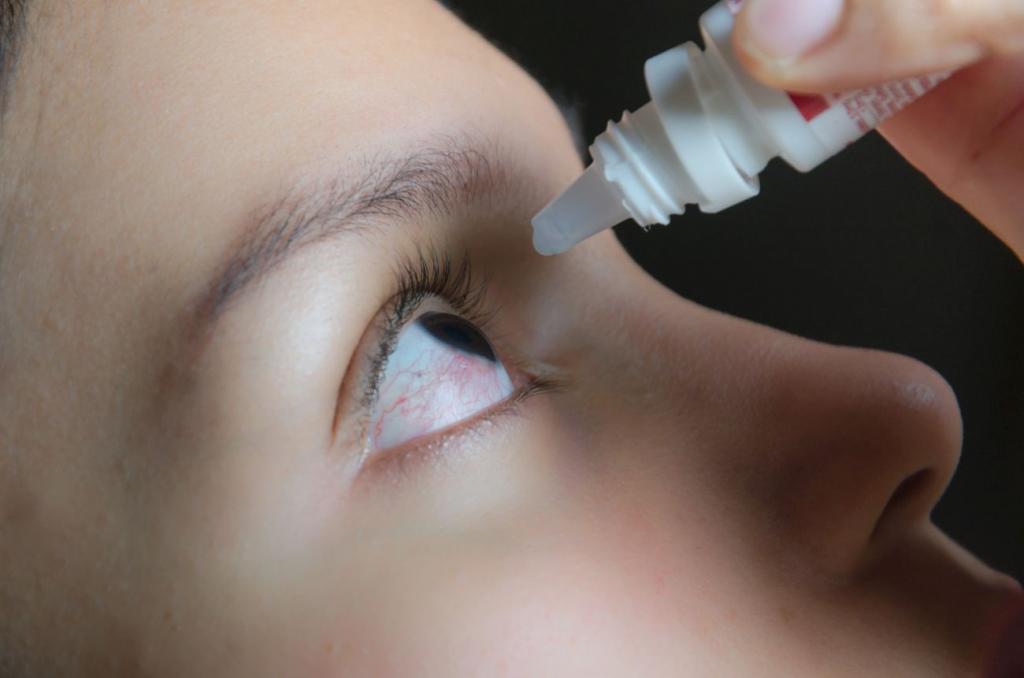If you have ever had red, burning, itchy eyes, you are likely one of the millions of people who experience dry eye syndrome each year. Often called “dry eyes,” the condition affects more than 26 million Americans. Nearly half of all adults experience dry eyes at some point, and more acute cases may increase in likelihood after age 50.1
Men and women appear to suffer from dry eyes at different rates. If you are female, you are nearly twice as likely to experience dry eyes than men of a similar age due to hormonal changes caused by pregnancy and menopause.
If you are one of the many who struggles with dry eyes syndrome, you don’t have to suffer. Knowing the symptoms and causes of the condition can help you determine effective treatments, many of which can be self-administered.

Common Symptoms of Dry Eye Syndrome
While symptoms can vary across different people, dry eye syndrome is a likely diagnosis if you experience one or more of the following:
- Burning or sore eyes
- Itchy eyes
- Red eyes
- Light sensitivity
- A feeling of dryness in eyes
- Blurred vision
A common but somewhat counter-intuitive symptom of dry eyes is excessive tear production or watery eyes. This is caused by dryness on the surface of your eyes triggering tears as a protective mechanism. Unfortunately, these excess tears do not alleviate dry eyes as they do not stay present long enough to counteract the condition.
Causes of Dry Eye Syndrome
While there are many factors that can contribute to dry eyes, age is one of the more common and easily identifiable contributors. According to the American Optometric Association, most people over the age of 65 experience symptoms of dry eye syndrome.2
The environment is another common cause of dry eyes. If you spend a lot of time outdoors in dry climates or windy weather conditions, you are more likely to experience dry eyes. Indoor air quality is also important. Air conditioners and ceiling fans move air around a house, removing humidity from the air and stirring up dust and allergens that can lead to dry eyes. If you fly frequently, you may notice that the extremely dry air in planes causes eye issues.
A modern cause of dry eye symptoms is the use of computers, smartphones, tablets, and televisions. The average adult spends more than nine hours per day looking at various screens, and for those who work in front of a computer all day, that number is likely much higher. People tend not to blink as fully or frequently when staring at a screen, and this leads to increased tear evaporation and dry eye symptoms.3
Finally, there are many health conditions and medications that can contribute to dry eyes. Common diseases like lupus, diabetes, and rheumatoid arthritis have been liked to dry eye syndrome. Medications that can lead to dry eyes include antidepressants, some blood pressure medications, and widely used drugs like antihistamines and birth control pills.
Treatment of Dry Eye Syndrome
A wide range of treatments exist for dry eyes, and their use generally depends on the severity and persistence of the symptoms. For most people, over-the-counter eyedrops formulated to simulate tears will alleviate dry eyes. For more severe cases or those caused by a serious underlying condition, your doctor may recommend other treatments.4
If you don’t respond well to artificial tears, your doctor may prescribe a drug called a cholinergic, which increases the production of your own natural tears.
Prescription drops or ointments are often used to reduce inflammation of the eyelids, which can sometimes prevent glands from introducing oil into your tears. Oil is an important component of tears that increases lubrication and helps prevent evaporation.
If you have severe dry eye symptoms that don’t appear to respond to any other treatments, an alternative is autologous blood serum drops. These eye drops are made by removing the red blood cells from your own blood and mixing it with a salt solution to mimic the composition of your own tears.
Sometimes eyedrops and medications don’t work, but physical changes to the parts of the eye that control hydration will. For example, in some patients, the tear ducts that drain tears can allow them to drain too quickly. In these cases, doctors can plug the ducts with removable silicon devices called punctal plugs. Alternatively, a doctor can permanently close the ducts with a procedure called thermal cautery.
Other physical techniques for alleviating dry eyes include a procedure called LipiFlow, which delivers a gentle massage to the eye to unblock clogged oil glands. Those glands can also be unclogged by a combination of pulsed light and massage.
Self-Care to Prevent Dry Eyes
There are steps you can take to help prevent dry eye syndrome and most involve establishing simple routines. A few of these are:
- Blinking often when using a computer or reading from a phone or tablet.
- Wearing sunglasses when outdoors, both to block UV rays and to protect from the wind.
- Drinking plenty of water to keep the entire body well hydrated.
- Taking dietary supplements, such as those containing omega-3 fatty acids, to help you avoid the symptoms of dry eye syndrome.5
A commonly prescribed routine that takes a bit of getting used to is a gentle daily washing of the eyes and eyelids with baby shampoo. Once you get past the idea of rubbing soap into your eyes, you may find that this is a comforting, relaxing ritual that not only can prevent dry eyes but can treat mild cases of dry eye syndrome as well.
Finally, an important part of self-care is knowing when to talk to your doctor. While symptoms of dry eyes syndrome are often obvious, they can affect each person differently. It is entirely possible for a person experiencing agonizing symptoms to have a very mild case of dry eyes while another person may not realize they have a severe dry eye problem until a doctor recognizes it. Seeing an optometrist or ophthalmologist once a year is an excellent way to prevent dry eye syndrome.


